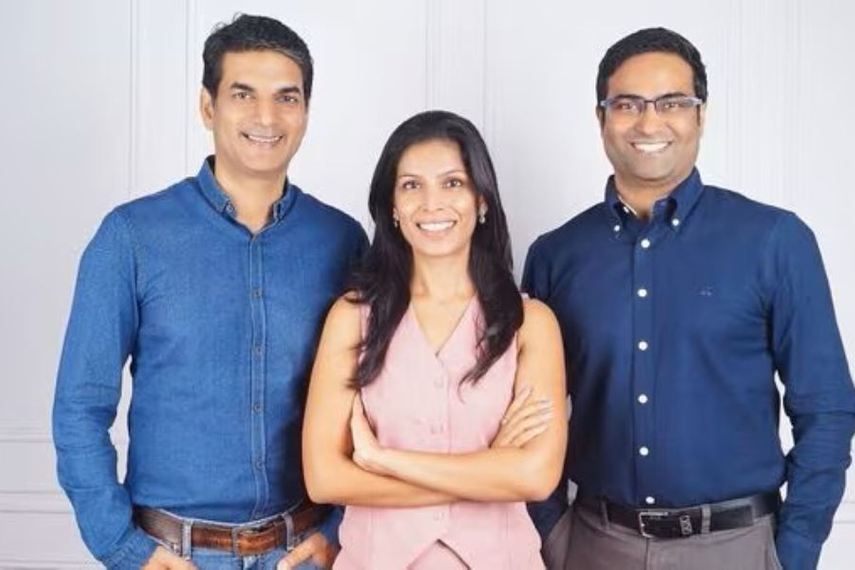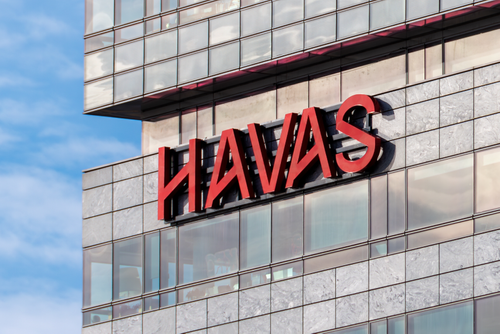
When Shailendra Singh, former business head for beauty retail and omnichannel strategy at Nykaa, moved house in Mumbai a year and a half ago, he struck up a conversation with Manav and Nimisha Dhanda, the founders of D’Moksha. That exchange has now reshaped his career.
Singh, who also spent 19 years at Hindustan Unilever, joined the US-based home décor brand as co-founder in June 2025. His appointment signals the company’s intent to expand beyond its core overseas markets into India’s fragmented but fast-growing home furnishings sector.
The brand was born in 2020 when Dhanda, the former CEO of SAB TV, and Nimisha, ex-marketing head at Turner Broadcasting Systems’ Cartoon Network and Pogo networks, grew frustrated while furnishing their home in 2018. Manav recalled how there weren’t too many options in the sustainable home décor space and eco-conscious products especially including curtains, rugs and linens, were underrepresented in India but booming globally.
The duo quit their jobs and launched D’Moksha in January 2020, naming it after their son Moksh. The company manufactures in India but has until now focused almost entirely on overseas consumers.
Its products made from hemp, linen, lyocell and recycled polyester are sold in the US, Canada and Mexico through the Amazon Global Selling porgramme. The firm offers more than 1,000 categories across curtains, tableware and bedding. Singh’s arrival comes as the brand looks to replicate its international model for Indian buyers, while adapting to local complexities.
Rethinking a legacy category
Curtains, Singh argued, remain one of the least evolved retail categories. “We realised that curtain buying today is filled with a lot of pain, and are sold how shirts were sold 5–10 years ago; as half-finished products,” he told Campaign.
Most shoppers buy from local shops, leafing through catalogues of swatches, outsourcing stitching to tailors, and taking delivery of products without knowing how they will look in their homes. “90% of the purchase starts without a designer,” Singh said, pointing to the lack of guidance.
D’Moksha intends to reframe the experience. Designers consult customers on privacy, lighting and aesthetics, generate digital mock-ups, and deliver finished curtains.
“Our tech helps them visualise how the curtains will look in the consumer’s home,” Singh explained. “It then shares four to five options and once she approves, our designer visits with the finished curtains, not tiny cloth swatches.”
The model also relies on a 100-day money-back guarantee, an offer Singh described as “an industry-first initiative.” He contrasted it with the fragmented shop-led ecosystem where retailers have little accountability.
The market opportunity
The Indian curtain industry is estimated at more than $1.5 billion and growing in double digits, making it among the fastest-expanding home décor sub-categories. Singh estimates that an average household in tier-one or tier-two cities spends between INR 50,000 and INR 1 lakh on curtains.
“This category has great margins, because of this high-value purchase, and yet is massively underserved,” he said. The company is positioning curtains as its entry point into India. Singh noted, “The idea is to start getting into homes with curtains, and subsequently expand to maybe rugs, bed sheets, towels and other categories.”
D’Moksha plans to build scale city by city. The first retail presence will be in Mumbai, followed by selective expansion. “We plan to open in one city at a time, set up maybe two or three stores and learn from that to expand. We hope to have 10–12 stores by 2026-end,” Singh said.
Balancing storytelling and performance
India’s price-sensitive market presents a familiar challenge: how to sustain a premium positioning while driving volume. Singh argued for a blend of storytelling and data-driven marketing. “We are clear about building the brand through storytelling and performance to land with the right messaging. We aren’t in a rush to reach a particular scale,” he said.
He distinguished between “interrupt media” and “seek-out media,” favouring the latter. “Our simple target is to hit 2000–3000 homes and build satisfied customers through word-of-mouth publicity. Because trust is the biggest brand factor in this category,” Singh said.
Offline presence will play a central role, based on his Nykaa experience. “I learned this at Nykaa where whenever we opened a physical store, offline and online sales would grow. That’s the philosophy for building D’Moksha’s business model,” he added.
Manav framed the approach differently. “You can build brand two ways. One is spending a lot of money and just vocalising what you want to do. The other is finding an authentic pain point and being genuine about how you can serve the consumers. True brands get built when they resonate with what consumers want and are authentically aligned to their pain point,” he told Campaign.
Investment and profitability
The company raised $575,000 in seed funding in October 2021 from investors including Apoorva Sharma of Venture Catalysts, The Chennai Angels, Aman Gupta of boAT, Varun Alagh of MamaEarth and Bala Sarda of Vahdam. It is currently raising a second round of angel funding.
Singh declined to disclose revenue targets, citing the ongoing round. “Fundamentally, this is a solid high-growth margin with healthy EBITDA. We are making business investments as we expand the team and in marketing. This comes from the confidence of seeing a strong and positive consumer feedback,” he said.
On marketing budgets, Singh offered only direction: “It will be a strong combination of traditional and hyper local marketing. We won’t launch pan-India in one go. It will almost be the quick-commerce kind of a model where you launch in a city, perfect it and then get to a particular scale.”
Curtains, unlike home décor consumables, are not frequent purchases. Globally, D’Moksha’s repeat customer rate is 25–30%, supported by categories such as tables and bed linen. In India, the company is betting on lifetime value rather than repeat frequency.
“The best brands can hit a lifetime value of ₹20,000 to ₹30,000 from a customer category,” Singh explained. “The curtain replacement cycle right now is 10 years, but it is getting shorter with living room curtains being replaced in three to four years. But that’s not our worry for now; we want to create a beautiful experience and build a brand.”
Dhanda drew a comparison with other household categories. “There are companies in the home category, like fans and mattresses, who have revenue of INR 1,000 crore or more, which have lower average order value than we do per home,” he said. “So, the home category works a little differently.”
Risks in the model
The expansion blueprint raises familiar questions for D2C brands. Execution costs in offline retail are high, particularly in categories requiring design consultation and after-sales service. The model also relies on relatively affluent urban consumers, a segment that has historically been difficult to scale beyond.
Data transparency remains another issue. While the brand has grown internationally on the back of Amazon Global Selling, the company remains dependent on the platform’s algorithms and signals for visibility and attribution. As Singh acknowledged, “Our approach to building the business is not chasing random, fancy numbers but adopting a thoughtful approach of truly solving a customer’s problems in the right manner.”
For now, Singh and Dhanda are positioning D’Moksha as a test case for whether a digitally-born, globally-sold, sustainability-oriented brand can successfully translate into India’s offline retail landscape. The bet is that pain points in curtain buying—confusion, lack of guidance, fragmented supply—can be solved with design consultation and technology.
Whether that translates into a scalable business is less certain. As Dhanda pointed out, “True brands get built when they resonate with what consumers want and are authentically aligned to their pain point.” The next two years, as D’Moksha attempts to anchor itself in Mumbai before moving city by city, will test whether that alignment can hold in one of the world’s most complex consumer markets.





.jpg&h=334&w=500&q=100&v=20250320&c=1)
.jpg&h=334&w=500&q=100&v=20250320&c=1)
.jpg&h=334&w=500&q=100&v=20250320&c=1)

.jpg&h=334&w=500&q=100&v=20250320&c=1)
.jpg&h=334&w=500&q=100&v=20250320&c=1)
.jpg&h=334&w=500&q=100&v=20250320&c=1)
.jpg&h=268&w=401&q=100&v=20250320&c=1)
.jpg&h=268&w=401&q=100&v=20250320&c=1)

.jpg&h=268&w=401&q=100&v=20250320&c=1)

.png&h=268&w=401&q=100&v=20250320&c=1)
.jpg&h=268&w=401&q=100&v=20250320&c=1)

